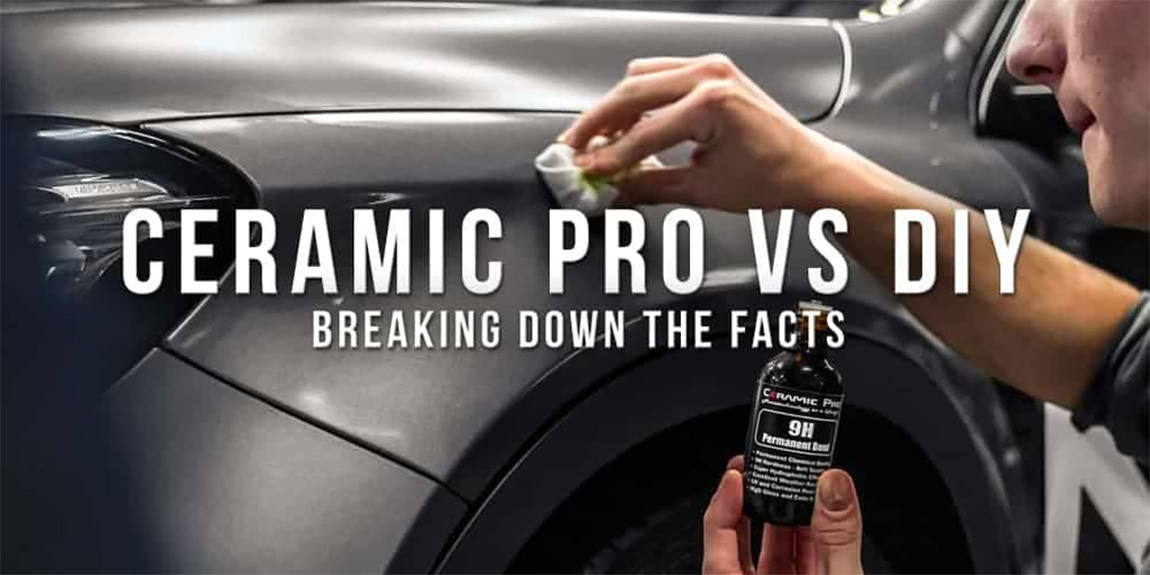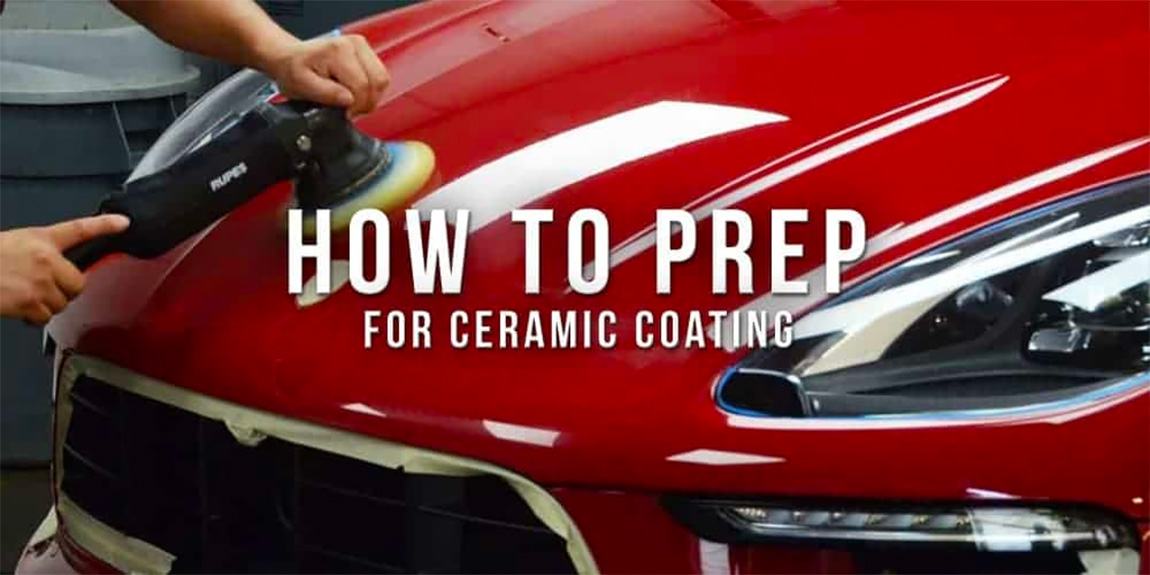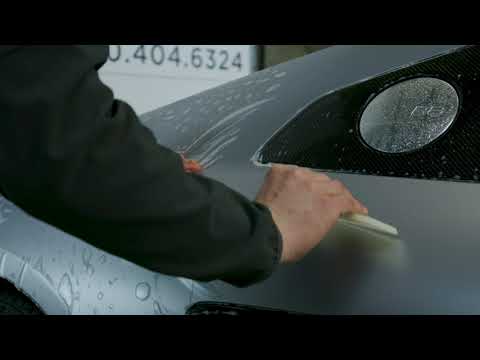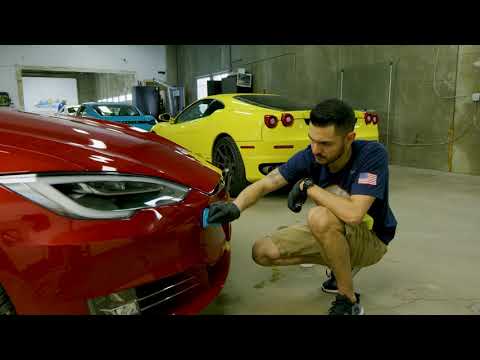Did you know that the first automotive paint protection methods had their roots in the late 1800s? Of course, back then, paint production was pretty rudimentary and consisted of slathering animal fat onto the surface of automobiles. Today, we have more modern and practical options for car detailing and paint protection, such as professional ceramic coating. Stay informed by reading Denver Automotive Ceramic Coating Cost Guide.
However, what is a ceramic coating, and is it essential to get for your car? An even more critical question: how much does it cost? You’ll find the answers to those questions in this automotive ceramic coating cost guide.
You’ll learn all about ceramic coatings and the process of their application (including DIY ceramic coating methods). We’ll also explore how a ceramic coating works and how it can be essential for keeping your car’s paint sleek and pristine for many years to come.
If you have any doubts about automotive ceramic coating, this is your chance to toss them aside. We’ll first start by taking a closer look at what ceramic coating is and how it works to protect your car’s paint.
- What Is Ceramic Coating?
- What Is Ceramic Coating Made Of?
- How Can You Apply Ceramic Coating To Your Vehicle?
- How To Choose Your Car’s Ceramic Coating When DIYing
- Some Tips To Consider When DIYing
- Prep Work Before The Application
- Don’t Skip On Paint Correction
- Applying The Ceramic Coating
- The Final Details
- Letting a Professional Apply Your Ceramic Coating
- The Cost of Hiring Professionals
- Wrapping Up Your Automotive Ceramic Coating Cost Guide

What Is Ceramic Coating?
We’ve already seen that automotive paint protection has a long history, but as you can imagine, smearing animal fat over car paint was not a popular trend and did not do all that much to protect the paint. For a long period of time, there wasn’t much more you could do to protect your car’s paint job. It was only in the 1970s that automotive innovators got to thinking about paint protection.
This led to the invention of polymer sealants and more durable metallic paints. Then, in the 1980s, 1990s, and early 2000s, paint protection for cars continued to improve until the invention of ceramic coating, which soon became a popular option. This innovation was to the excitement of many car enthusiasts.
After all, who wouldn’t get excited to protect their car from everyday scratches and corrosion? Not only will excellent paint protection keep your car looking great for a long time, but it could save you money in the long run because you won’t be taking your car into the shop so often to fix up minor dings and scratches.
Some ceramic-pro coatings can even withstand UV radiation, which can fade your paint, as well as physical and chemical abrasion. Also, any dirt, mud, or bird droppings will slide off without leaving a stain. At this point, a ceramic coating might sound too good to be true.
You might be wondering what kind of prep work might be necessary and how ceramic coating could work so well. Let’s take a closer look at these inquiries, starting with what ceramic coating consists of.

What Is Ceramic Coating Made Of?
A ceramic coating consists of silicon. Silicon is a material that is durable, thin, and transparent. These are all significant factors when you don’t want anything getting in the way of your car’s paint color.
Silicon is so tough that it’s often used for the manufacturing of solar panels, which, of course, withstand intense solar rays day after day without any sign of decay or fading. However, it’s important to remember that just because your car has silicon on it doesn’t mean it will produce free solar energy for you. That requires much more complex technology that ceramic-pro coating, unfortunately, does not yet possess.
So, why, out of all the other materials available, is silicon used for ceramic coating? Its durability is obviously one of the main factors. Silicon can protect against just about anything.
This is because of its ability to insulate whatever it is applied to in its entirety. The second reason is that it can stick to any flat surface without any worries of peeling off later. Even if you have the slipperiest vehicle on the planet, silicon will have no problem sticking to it.
Beyond that, as mentioned before, a ceramic pro coating is thin and almost invisible. These factors make it, so it will never get in the way of your car’s look or function. In fact, a ceramic coating might even improve your vehicle’s paint job by bringing out the color and the shine.
If all this wasn’t enough to convince you of ceramic coating’s advantages, it is also very waterproof. While most car paints are already waterproof, they may not give all the protection that a vehicle needs. This is where ceramic coating comes in.
How Can You Apply Ceramic Coating To Your Vehicle?
Cars can suffer from a vast array of problems, from scratches to swirl marks, so of course, you want to protect them as much as you can. However, if you decide you want to get a ceramic pro coating for your car, what does the application process look like?
One of the many benefits of a ceramic coating is that it is very versatile, and you can either apply it yourself or have a professional do the job for you. In this article, we will discuss both methods so you’ll have a better idea of which method might be best for you. We’ll first explore what it’s like to apply and choose a ceramic coating yourself and what you need to keep in mind when doing so.

How To Choose Your Car’s Ceramic Coating When DIYing
If you’re someone who loves cars and wants to be a ceramic pro, the idea of applying your car’s ceramic coating yourself may sound great. However, it’s important to keep in mind that the process isn’t as easy as slathering some silicon on your car and calling it a day. In order to get the best results from your ceramic-pro coating and to make sure it does its job, it needs to be applied in the right way to prevent swirl marks and other issues. Using a professional detailer for car detailing services is crucial.
DIYing your ceramic coating involves buying the ceramic coating yourself. While this may seem like the easy part, you need to be careful not to be deceived. This is because there have been more than a few accounts of people buying “ceramic coating” when the product turned out to be something else entirely, such as cooking oil.
While oil may give your car a nice and temporary shine, it’s not going to give your car the long-lasting, abrasion-resistant protection that you’re looking for. So, when buying your ceramic coating, make sure you get it from a reputable source.
Also, check the ingredients. Remember that a ceramic coating is made of silicon, usually listed as silicon dioxide on the product. A ceramic coating may also have some other ingredients in it such as titanium dioxide and solvents to bind the various ingredients.
Beyond the worry of being deceived, you also have to take into consideration what to look for when choosing a high-quality ceramic coating. It would be best if you always looked for 9H hardness when it comes to ceramic coatings. With this level of hardness, you can be sure that your car will be as protected as it can possibly be.
Some Tips To Consider When DIYing
Beware that you can easily make the mistake of buying too much coating than what you need. For most vehicles, even the larger ones, you won’t need a bottle of ceramic coating larger than 30ml. If you have an especially large vehicle, a 50ml bottle might do the trick instead.
Anything larger than 50ml will just be wasted coating and wasted money. The downside of applying a ceramic coating yourself is that you may not be able to get your hands on professional-grade ceramic pro coating. This is because this prestigious level of coating is typically only marketed to trained professionals and is hard to find otherwise.
This, however, does not mean you should give up the idea of DIYing your ceramic coating. There are plenty of ceramic coating brands that will offer you some pretty great paint protection. You also will save a significant chunk of money when going this route.
When considering the ceramic coating worth when doing it yourself, you might find yourself spending around a hundred dollars or so (often less), depending on what kind of product you buy. If you don’t have a lot of cash on hand and want your vehicle to get protected fast, DIYing is a great option.
Of course, while you might be able to do a pretty great job DIY your ceramic coating, don’t be surprised to know that a professional will always do it better. This is because professionals always have the better tools, better products, and more experience.
Don’t be too disillusioned, however. You might also be surprised at how well a DIY ceramic coating can turn out, especially if you apply the coating the right way. Speaking of applying the coating the right way, what is the right way exactly?

Prep Work Before The Application
Now that you’ve got your bottle of ceramic coating and you know what to expect, you can get down to business. What’s your first step? Absolutely under no circumstances should you apply ceramic coating if you have not prepped your car first.
There’s nothing worse than applying a ceramic coating to a vehicle that hasn’t been prepped. This is because not only are you wasting all the money you spent on your coating, but your coating is not going to last as long as it should, nor will it work as well. So, what does the prep work involve?
No matter what sized vehicle you have, make sure you wash your car from top to bottom. It’s best to do this by hand to get the best results rather than just spraying down your car with a garden hose and calling it a day. Washing your vehicle is necessary because you don’t want any dirt particles, bug splatters, or grime to get stuck under your ceramic coating once it’s applied.
Remember that once you apply a ceramic coating over dirt, you’ll likely never have the chance to clean that dirt again. Beyond that, ceramic coatings can magnify the surface it coats, meaning that any debris left behind will be more noticeable than before.
After you wash your car, don’t forget to bring out the clay bars. Clay is made of countless tiny grains, so tiny that they won’t damage your car but can help scrub out any deeply ingrained dirt. Always remember to use some sort of lubrication fluid and water when using a clay bar so it can run along the surface of your car.
Make sure you take off every grime spot with your clay bar. If you ignore this, the ceramic coating may have trouble hardening.
Don’t Skip On Paint Correction
Many may find it tempting to slather on the ceramic coating and ignore any defects in their car’s paint job, hoping that the ceramic coating will solve all their problems. This, however, is a big mistake. Your ceramic coating has nothing to do with paint correction but rather paint protection.
As with grime, once a ceramic coating is applied to any defect on your car, that defect is going to stay very visible and virtually impossible to reach for as long as your coating lasts. So, be sure to inspect your vehicle entirely and check for any scratches or chips in your car’s paint. Then, repair them as much as you can.
While all these steps can be exhausting, they’re worth it if you want a great result with your ceramic coating. After correcting any paint damages, and removing swirl marks don’t forget to give your vehicle a good, final wipe-down. This will ensure that there’s no tiny debris sitting on your car and that your car is ready to have a ceramic coating applied.

Applying The Ceramic Coating
When applying the ceramic coating to your car, make sure you don’t do it on a hot, humid day. This is because heat and humidity can make it difficult for the coating to bond to your car. After all, it will start to harden too fast. The best condition to apply the coating is when the temperature is around room temperature.
The two tools that you can’t do without during the application process are an application sponge and a gentle cloth that is of suede. Make sure to wrap the cloth around the sponge, so there are no wrinkles bunching up the fabric. Any creases can contribute to an uneven coat of your ceramic coating.
This is finally the time where you can bring out your bottle of ceramic coating. Be sure to shake it before using it to make sure the ingredients are all mixed up but don’t shake it too much where bubbles might form. Then, apply a few drops to your cloth to make sure it is moist and can run across your car’s surface.
Keeping the cloth moist is critical to ensure that the ceramic coating gets evenly applied. To accomplish this, add a few more drops of ceramic coating to the fabric every so often.
Do not move the cloth in circular motions when applying the coating. Instead, try to move side-to-side for the best results. Also, be sure to work in small sections rather than trying to tackle the entire vehicle at once.
For example, start with the vehicle’s hood, then move on to the door, and so on.
The Final Details
After applying the coating to a section of your car, it will need about five minutes to dry. Once all the coating is dry, you’ll want to buff your vehicle to remove any imperfections in the coating. This is best done with a microfiber cloth.
After an hour or two, if you feel that it’s necessary, you can apply a second layer of ceramic coating for extra protection and shine. Then, after a few more hours, your ceramic coating should be dry, and your vehicle will be ready to drive around town.
The overall cost of DIYing your ceramic coating is very affordable. Including the coating along with the application tools, the total cost won’t be more than a couple of hundred dollars. Your ceramic coating should last around 1 to 3 years.
If you get more expensive coating like nano-ceramic coating, you may find yourself with a higher price tag. However, considering the quality and the nano-coating hardness rating and curing time, a higher price tag might be worth it.
So, how does DIYing your ceramic coating differ from having it done professionally?
Letting a Professional Apply Your Ceramic Coating

Keep in mind that a significant difference between DIYing and letting a professional do the job is that professionals have the best ceramic coating available. You also won’t have to do any of the work. You get to sit back and relax while the professionals have the pleasure of washing, correcting, and coating your vehicle.
Professionals also have more than one way of applying the ceramic coating. For example, instead of going over every little inch of your car with a cloth, they have a pressure sprayer at their fingertips that can cover your car in a ceramic coating in no time at all. More than that, not only is a pressure sprayer fast, but it produces an even layer of ceramic coating too.
The professionals may also opt for the other application method which is applying the ceramic coating as a liquid. This is more or less the same as doing it yourself. The liquid application will make it especially hard for any UV ray or grain of sand to damage your car.
Another benefit is that a liquid coating tends to be cheaper than a sprayed coating. It is important to remember that a liquid coating will be a little thinner than a sprayed coating. However, it will still produce very good protection for your vehicle.
No matter the method of application, once your vehicle has a ceramic coating, you can be confident that it will be protected from the elements. This involves protection from the sun’s rays, protection from scratches caused by rocks or branches, and protection from any mud or grime that might otherwise cause stains. Beyond that, a ceramic coating will make your vehicle’s paint job shine like never before.
The only downside is the cost. Let’s take a look at the expense of hiring professionals.
The Cost of Hiring Professionals
The cost of hiring professionals to apply a ceramic coating can depend on a variety of factors. For example, the size of your car is essential. The larger your car, the more coating will be needed, which comes with a higher price tag.
The age of your car will also be a determining factor. Older cars will cost more than new cars. Why might this be?
Because older cars likely have damage to their paint job, including scratches and grime. These damages will need to be repaired by professionals who can take a long time to complete before any ceramic coating can be applied. If your car is new, the professionals can move almost immediately to the coating process.
With all this labor combined, you can expect to spend around $2,000 to $5,000. While this may sound outrageous to you, keep in mind that a professional ceramic coating will better protect your vehicle and will last longer compared to doing it yourself. For example, instead of the coating lasting 1 to 3 years when DIYing, a professional coating can last as long as five years or more.
Wrapping Up Your Automotive Ceramic Coating Cost Guide
You now know all about what ceramic coating is, how it’s applied, and the Denver ceramic coating cost. After reading this automotive ceramic coating cost guide, you can be confident in the ceramic coating choices that lie ahead of you.
To learn more about automotive ceramic coating, explore more of our website or contact us here.




